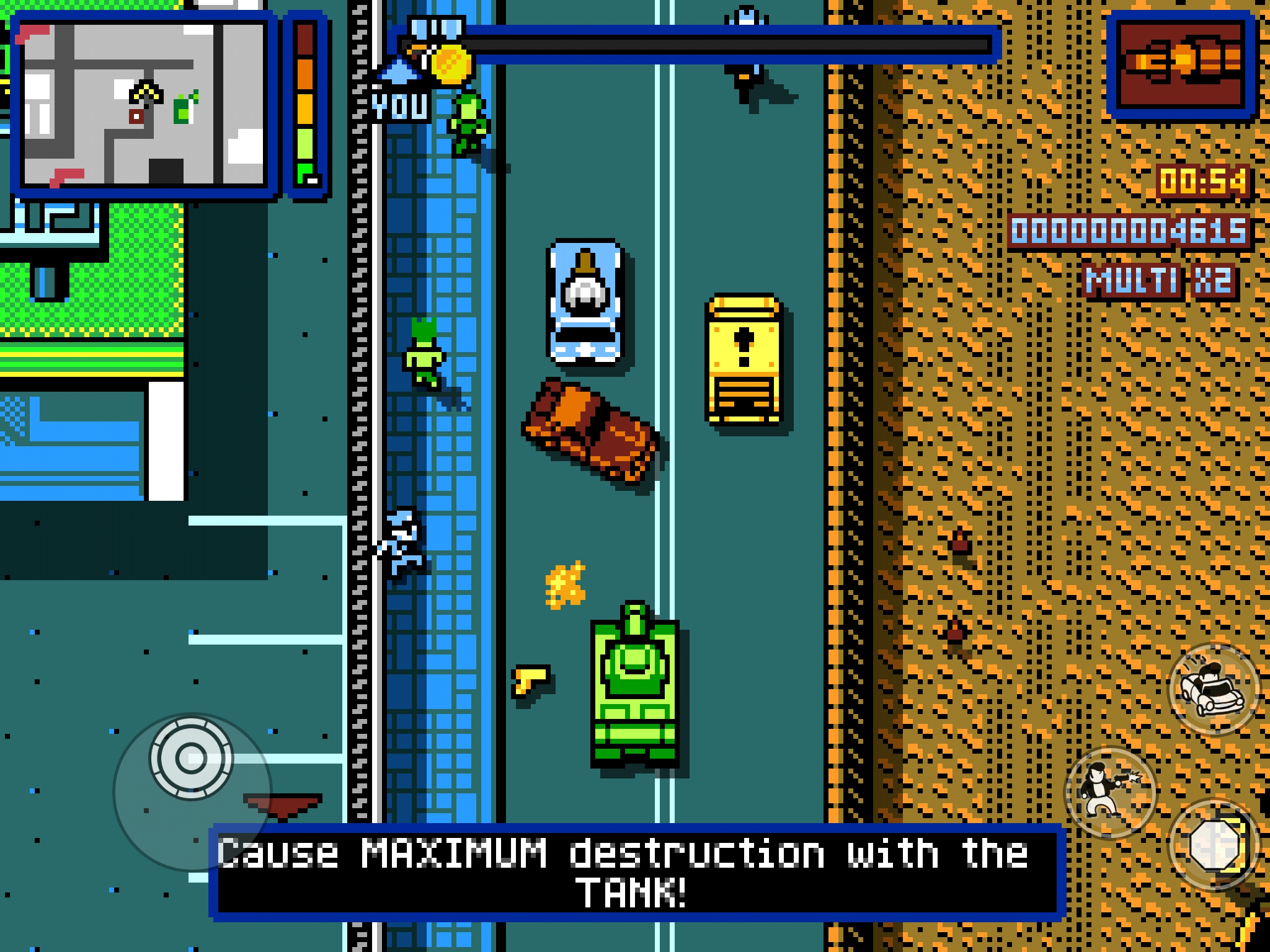

- #Retro city rampage dx 3ds map display update
- #Retro city rampage dx 3ds map display code
- #Retro city rampage dx 3ds map display professional
After all, if you're asking the system to do work, why would you request no data to be returned? Well, my educated guess is that it was just the easier thing to do in the game's source code, so the programmers just opted for leaving these seemingly pointless requests in.
#Retro city rampage dx 3ds map display code
In this case, going through the cumbersome process of decoding ARM instructions manually was very error-prone and led to unnecessary branching within the code that would lead to slow interpretation.
#Retro city rampage dx 3ds map display professional
If you've seen my professional work, you'll know I'm a big proponent of applying C++ metaprogramming when a good chance comes about. The new dispatcher replaces some ugly logic with a much neater approach that also happens to improve performance a little.

In preparing the JIT, I had to rework the interpreter's instruction dispatcher so it could be used as a fallback by the JIT for instructions it doesn't cover yet.
#Retro city rampage dx 3ds map display update
If you're curious about the inner workings of this new JIT, I shared a more technical overview in Development Update 9. Of course, this JIT is just the basis to build on, and it will be refined and extended over the coming weeks to make sure the speedups translate to all other titles as well. But the potential is very visible in yeti3DS and Retro City Rampage DX - the former getting a mind-blowing 650% framerate improvement! See for yourself: yeti3DS runs at 7.5 times the interpreter's framerate now! I announced my early tinkering with JITting back when the project was announced, having been working secretly on it until it was ready for a general showcase.Īnd finally, it's here: The first JIT-enabled Mikage release shipped in February! The translation process doesn't cover the entire ARM instruction set yet, so it will be another couple of weeks until all comercial games benefit from the JIT. It takes dedicated experimentation and research over several weeks, and then there are still several components that need to be written independently.

That said, writing a JIT is a complex undertaking, certainly not something you can pull off in a couple of days and immediately collect fruits of labor from. This method of CPU emulation can provide massive speedups (up to 10x) depending on the situation, so logically I assigned high priority to the JIT on Mikage's roadmap. The big weakness of interpreters is performance: Emulating every 3DS CPU instruction with a C++ function call flat out isn't going to run at great speeds.Ī more performant solution is called Just-In-Time binary translation (commonly abbreviated to JIT in emulation circles), where you disassemble and recompile functions executed by an emulated game to equivalent binary code that can be executed on the target device (i.e. Let's dive right in! AArch64 JIT for super-fast CPU emulationĮvery emulator project has to start somewhere, and in terms of CPU emulation that's usually an interpreter core: Easy to get early results from, with little complexity, and adaptable when surprising hardware behavior is discovered. We have another update in store, this time with major optimization work going on and of course the obligatory compatibility improvements.


 0 kommentar(er)
0 kommentar(er)
